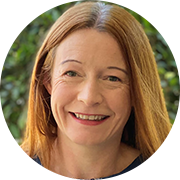Excerpted from an article by Sinead Kaufman, Chief Executive Rio Tinto Minerals
Finding quality greenfield resources is getting much harder.
There has been considerable discussion around the increasing degree of difficulty of new discoveries with attributable factors such as industry consolidation, access challenges, decreasing grades, reduced grassroots spending, depleting talent pool of experienced geologists, exploring at depth and under cover as well as the changing geopolitical environment, which links to the risk appetite of companies. Everything “easy” to find has probably already been found, is the often-repeated lament.
Exploration is a team sport
Diverse and well networked teams are key to unlocking the minerals of the future. Related to this is the need for an incubator mindset.
A case in point here is the discovery of the Jadar lithium-borate resource in Western Serbia where we have seen, and continue to see, the networked model and the incubator mindset deliver results.
But let’s start with some background: Rio Tinto first visited Serbia in 1998 looking for borates. Over the next few years, exploration progressed and the first drill hole into the Jadar deposit was completed in 2004. This find included the discovery of a new mineral called jadarite. Serbia’s Jadar basin is today, the only place in the world where this deposit has been found. This is a geologically rare event as it is not normal to find hundreds of millions of tonnes of a mineral never previously recorded.
The importance of a diverse and networked team in the discovery and evaluation at Jadar cannot be overestimated. This includes academics and a wide group of local and global experts across all aspects of the environmental, social and governance (ESG) impacts of the Jadar project. And this is a key point for the future—while finding a new mineral is more difficult than ever, so too is obtaining a social license to operate. The mineral resource sector is facing more pressure than ever to deliver better ESG performance and with exploration being in the frontline, ESG will play a significant role in future exploration and discoveries. Collaborating on the ESG requirements sooner rather than later will be a key feature of maintaining tenure as well as ensuring genuine and transparent community engagement.
By way of example on the environmental front, at Jadar our team of scientists and other experts worked together to develop a stable and reliable process to transform processing waste from slurry into filter cakes. Through this method of dry stacking we can reduce the volume of waste that needs to be stored, negating the need for a tailings dam. There are many other examples and to date we have finalized 12 environmental studies and more than 23,000 biological, physical and chemical analyses of air and water have been completed. This consultation is ongoing and will continue to inform our final submissions for approval.
The incubator concept at Jadar is also paying dividends. Jadarite is a new mineral with no reference points and no known process anywhere in the world that could be used as a template for extraction, so a bench scale pilot plant was a critical part in understanding if and how the lithium could be extracted. This has resulted in a new technology to produce saleable lithium and boron products from the jadarite ore, with a small pilot plant developed at our research center in Australia to test the new technology.
Over a period of six years, a global team of experts has conducted some 2,000 tests to confirm the technical viability of the processing method and this has led to numerous improvements in the production process and in the health, safety, and environmental protection processes.
A pioneering spirit
Ours is an extraordinary industry by virtue of the fact that Mother Nature hides her minerals in some of the most remote, ecologically pristine environments in the world.
And, with much of the low-lying fruit already discovered, we need to be prepared to go, with a sense of adventure, to places that Mother Nature needs to take us, to find the next generation of minerals and develop ways to extract them in the full knowledge of what we will be leaving behind.
This is what will be required of our next generation of geologists, metallurgists, and other disciplines we have not even heard of, if we are to go to the ends of the earth to discover the next generation of minerals, against a backdrop of climate change and the ever-increasing demands on the fragile planet we all share. We need to imbue them with a pioneering spirit, to enable them to challenge norms and the status quo, to embrace new technology and advanced data analytics and to deeply understand the requirement to transition to a low-carbon future.
 Sinead Kaufman
Sinead Kaufman
Chief Executive, Minerals
Since joining Rio Tinto in 1997 as a geologist, Sinead has held senior leadership and operational roles across Aluminium, Copper & Diamonds, Energy & Minerals, and Iron Ore.
Read her full bio
Resources